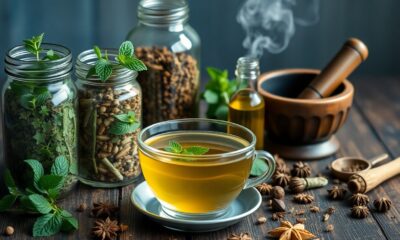Health & Society
Local staff ‘particularly vulnerable’ to detention, as UN calls for their release

Staff members of the United Nations around the world who are recruited locally are “particularly vulnerable” to detention and should be released and allowed to go home according to the UN Secretary-General, António Guterres.
In the last year alone 101 UN staff members were arrested or detained globally of whom at least 52 UN personnel remain in detention.
The UN has a presence on the ground in some of the world’s most dangerous and unstable locations including Gaza, Sudan, Yemen, Haiti and the Democratic Republic of the Congo.
In a statement ahead of the International Day of Solidarity with Detained and Missing Staff Members the UN chief said that UN staff often serve “at immense personal risk – facing threats of kidnap, violence, harassment, detention, and more.”
Mr. Guterres urged governments to ensure the safety and security of UN staff and to seek justice for crimes committed against them.
He called on all states to fulfill their obligations under international conventions related to the protection of UN personnel.
“Together, we must protect those who serve humanity and help build a better and safer world for all.”
Held in Yemen
The Arabian Peninsula state of Yemen is a particularly dangerous place to work for the United Nations.
“In Yemen, 23 UN staff members, along with many other humanitarian workers, remain detained – some for more than three years,” the President of the United Nations General Assembly, Philémon Yang, said in his message to mark the international day.
The staffers are being held by de facto Houthi authorities in areas of the country under their control. Yemen has been embroiled in civil conflict since 2014 between Houthi militants and the internationally-recognized Government.
Mr. Yang said that “one UN aid worker from the World Food Programme has died while detained,” adding that those colleagues had “dedicated themselves to educating children, providing vital medical and food assistance to millions, and promoting peace and dialogue.
“Their work must be protected. I stand in full solidarity with all those detained. They must be released and protected.”
The staff detained in Yemen are all national staff and, prior to their detention, worked with UN and other agencies including the UN human rights office (OHCHR), the UN Development Programme, UNICEF, UNESCO, the World Food Programme, and the NGOs, CARE, Save the Children, and Oxfam.
The President of the General Assembly – which comprises all 193 UN member states – called for the immediate and unconditional release of all UN staff detained in Yemen and elsewhere.
Solidarity and action
The International Day of Solidarity with Detained and Missing Staff Members marks the anniversary of the abduction of Alec Collett, a former journalist working for the UN Palestine refugee agency, UNRWA, who was abducted by a gunman in 1985. His body was found in Lebanon’s Bekaa Valley in 2009.
The aim of the international day is to mobilize action, demand justice and strengthen the resolve to protect UN staff and peacekeepers, as well as workers in the non-governmental community and the media.
Health & Society
Probiotics and Prebiotics – Building a Strong Foundation for Gut Health

Just as strong buildings require a solid foundation, optimal gut health needs the right balance of probiotics and prebiotics. He, she, and they may not realize that probiotics, the beneficial bacteria found in certain foods and supplements, play a vital role in maintaining digestive balance, while prebiotics, the fiber that feeds these good bacteria, can enhance their effectiveness. This blog post researchs into the crucial components of gut health, discussing how they can help prevent gastrointestinal issues, boost immunity, and support overall well-being.
Key Takeaways:
- Probiotics are live beneficial bacteria that aid in maintaining a healthy gut microbiome.
- Prebiotics are non-digestible fibers that serve as food for probiotics, enhancing their effectiveness.
- A balanced diet rich in both probiotics and prebiotics can improve digestion, boost immunity, and support overall health.
- Common sources of probiotics include fermented foods like yogurt, kefir, and sauerkraut, while prebiotics can be found in foods such as garlic, onions, and bananas.
- Incorporating both into your daily routine can foster a healthier gut environment and potentially improve mental health and mood.
Understanding Gut Health
While many individuals may overlook the significance of gut health, it plays a vital role in their overall well-being. A well-functioning gut ensures efficient digestion, nutrient absorption, and a robust immune system. Neglecting gut health can lead to various issues, such as digestive disorders, fatigue, and even mood imbalances. Thus, understanding the importance of maintaining a healthy gut serves as a fundamental aspect of leading a healthier lifestyle.
The Role of the Gut Microbiome
Understanding the gut microbiome is necessary for grasping the intricacies of gut health. This diverse community of microorganisms resides in the gastrointestinal tract and plays a significant role in digestion, metabolism, and immune function. They help break down complex carbohydrates and synthesize necessary vitamins, offering a myriad of benefits. A balanced gut microbiome can influence overall health, affecting everything from inflammation levels to mental health.
Importance of Gut Health for Overall Well-being
After all, he or she may not realize that gut health significantly impacts their physical and mental well-being. A flourishing gut microbiome contributes to effective nutrient absorption, robust immune defenses, and balanced hormone levels. When the gut is in poor health, it may lead to conditions like anxiety, depression, and autoimmune disorders. They should keep in mind that maintaining gut health through probiotics and prebiotics promotes easier digestion, supports emotional stability, and fosters optimal health.
Understanding the connection between gut health and overall well-being is vital for individuals aiming to enhance their life quality. A healthy gut can lead to improved digestive efficiency, supporting necessary functions like nutrient absorption and toxin elimination. Moreover, an imbalanced gut microbiome may be linked to serious health concerns, including chronic inflammation and mental health disorders. By prioritizing gut health through dietary choices, such as incorporating prebiotics and probiotics, he or she can achieve a healthier lifestyle and experience significant benefits across numerous bodily functions.
What are Probiotics?
Even though many people might use the term interchangeably, probiotics are specific types of microorganisms that provide health benefits when consumed in adequate amounts. These live bacteria and yeasts are primarily known for their positive effects on gut health, aiding in digestion and overall well-being.
Definition and Types of Probiotics
After exploring the essence of probiotics, one can define them as beneficial live bacteria that contribute to gut health. They vary in types, each with distinct strains and benefits:
| Types of Probiotics | Characteristics |
|---|---|
| Lactobacillus | Commonly found in yogurt and fermented foods, aids in lactose digestion. |
| Bifidobacterium | Helps in digestion and maintains gut health, often present in dairy products. |
| Saccharomyces boulardii | A yeast probiotic used for treating and preventing diarrhea. |
| Streptococcus thermophilus | Supports lactose digestion, often used in dairy fermentation. |
| Enterococcus faecium | Enhances gut health and assists in treating various digestive disorders. |
Recognizing the variety of probiotics helps individuals make informed choices about their gut health.
Health Benefits of Probiotics
Probiotics play a significant role in enhancing health by promoting a balanced gut microbiome. They can help alleviate symptoms of digestive issues, such as irritable bowel syndrome, and may even boost the immune system. It is worthwhile noting that probiotics can also assist in maintaining overall gut health, thereby contributing to improved nutrient absorption.
With ongoing research into probiotics, it is becoming increasingly evident that they hold the potential to significantly improve quality of life. Some studies suggest that probiotics may aid in preventing or managing conditions such as diarrhea, inflammatory bowel disease, and even mental health disorders like anxiety and depression. However, it is crucial to approach probiotic supplementation with caution, as they may lead to side effects in some individuals, especially those with compromised immune systems. It is prudent that individuals consult healthcare professionals before beginning any new probiotic regimen.
What are Prebiotics?
Many individuals may not realize the significance of prebiotics in maintaining a balanced gut microbiome. They are non-digestible food ingredients that serve as nourishment for beneficial gut bacteria, promoting their growth and activity. Found in various sources such as fruits, vegetables, whole grains, and legumes, prebiotics help to create a thriving environment for probiotics, contributing to overall gut health and wellbeing.
Definition and Sources of Prebiotics
After consuming certain foods rich in dietary fibers, individuals unknowingly provide a source of energy for the beneficial bacteria residing in their gut. These fibers, known as prebiotics, can be found in foods such as garlic, onions, asparagus, bananas, and oats, fostering a healthy gut microbiome and supporting digestive health.
Health Benefits of Prebiotics
What many people may find surprising is that prebiotics offer a range of health benefits beyond just supporting gut bacteria. They help improve digestion, enhance mineral absorption, and bolster the immune system. Furthermore, prebiotics can positively impact mental health by reducing symptoms of anxiety and depression due to the gut-brain axis connection.
It is necessary for individuals to consider the health benefits that prebiotics can provide. By promoting the growth of beneficial bacteria, they aid in improving digestive health, which can lead to better nutrient absorption and enhanced immune function. Furthermore, incorporating prebiotics into the diet may reduce the risk of gastrointestinal disorders and combat inflammation, making them a valuable addition to a balanced, health-promoting diet.
Synergy Between Probiotics and Prebiotics
Once again, it becomes evident that probiotics and prebiotics do not just coexist but actively enhance each other’s benefits. Probiotics, which are beneficial bacteria, thrive on the fiber-rich prebiotics, creating a harmonious relationship that supports gut health. This synergy ensures that probiotics can flourish and exert their positive effects on the digestive system, ultimately contributing to overall well-being.
How They Work Together
One of the most significant aspects of this relationship is that prebiotics serve as a food source for probiotics. By nourishing these beneficial bacteria, prebiotics help to increase their population, allowing them to establish a stronger presence in the gut. This dynamic interplay results in improved microbial diversity and enhanced gut function.
Impact on Gut Health
After understanding their synergistic relationship, it’s imperative to recognize the profound impact that probiotics and prebiotics collectively have on gut health. They not only foster a balanced gut microbiome but also play vital roles in digestion, immunity, and inflammation reduction.
Indeed, the combined action of probiotics and prebiotics fosters a more resilient gut environment that can significantly lower the risk of gastrointestinal disorders. By promoting a healthy gut flora, they simultaneously enhance nutrient absorption and bolster the immune system, helping to defend against harmful pathogens. Furthermore, studies indicate that this synergy can lead to reduced inflammation and improved mental health, showcasing the extensive benefits of a well-balanced gut microbiome. Hence, cultivating a diet rich in both probiotics and prebiotics is instrumental for anyone seeking to optimize their gut health.
Incorporating Probiotics and Prebiotics into Your Diet
Keep in mind that incorporating probiotics and prebiotics into one’s diet is necessary for promoting optimal gut health. A diverse diet rich in these nutrients can enhance digestion, boost immunity, and improve overall well-being. He or she can start by including fermented foods and fiber-rich ingredients, ensuring they consume a balanced mix that supports their microbiome.
Dietary Sources
Prebiotics can be found in a variety of foods such as garlic, onions, leeks, asparagus, and bananas. These dietary fibers serve as food for beneficial gut bacteria, promoting their growth and function. By including these items in daily meals, individuals can naturally enhance their prebiotic intake while benefiting from a range of other nutrients.
Supplements and Considerations
Prebiotics are also available in supplement form, which can be beneficial for those who struggle to consume enough through food. However, one should approach supplementation carefully. Sources should choose high-quality products from reputable manufacturers to ensure safety and efficacy. It is necessary for them to consult with a healthcare professional before beginning any new supplement regimen, especially if they have underlying health conditions or are taking medications. The right balance of probiotics and prebiotics provides significant health benefits, but they must also consider their individual dietary needs and tolerances.
The Future of Gut Health Research
Now, researchers are exploring the complex relationship between gut microbiota and overall health, focusing on how diet, lifestyle, and environmental factors can shape gut health. They aim to uncover the potential of personalized probiotics tailored to individual microbiomes, which could lead to improved health outcomes. However, he, she, and they must remain cautious about the oversaturation of marketing for unregulated products that claim miraculous benefits. As science advances, the spotlight on metagenomics and gut-brain connections will expand, providing deeper insights into how gut health impacts physical and mental well-being.
Conclusion
To wrap up, he or she should understand that a balanced intake of probiotics and prebiotics plays a vital role in maintaining gut health. They work synergistically to enhance digestion, strengthen the immune system, and foster a diverse gut microbiome. By prioritizing these beneficial compounds in their diet, individuals can establish a solid foundation for overall health and well-being. Investing in gut health is an vital step toward promoting long-term vitality and preventing various health issues.
FAQ
Q: What are probiotics and prebiotics?
A: Probiotics are live beneficial bacteria that contribute to the balance of microorganisms in our gut. They can be found in fermented foods like yogurt, kefir, sauerkraut, and supplements. Prebiotics, on the other hand, are types of dietary fiber that serve as food for these beneficial bacteria, helping them thrive. Foods rich in prebiotics include garlic, onions, leeks, asparagus, and bananas.
Q: How do probiotics benefit gut health?
A: Probiotics support gut health by promoting a healthy balance of gut bacteria. They can help prevent the growth of harmful bacteria, enhance digestion, and improve nutrient absorption. Additionally, probiotics have been shown to strengthen the gut barrier, possibly reducing the risk of gastrointestinal issues such as irritable bowel syndrome (IBS) and diarrhea.
Q: What role do prebiotics play in gut health?
A: Prebiotics are necessary for nourishing the beneficial bacteria already present in the gut. By providing the right environment for these bacteria to flourish, prebiotics can enhance their activity and increase their population. This, in turn, can lead to improved digestive health, enhanced immune function, and better overall well-being.
Q: Can I get enough probiotics and prebiotics from my diet alone?
A: Yes, a balanced diet rich in fermented foods and fiber can provide sufficient amounts of probiotics and prebiotics. Sources of probiotics include yogurt, kefir, kimchi, and miso, while prebiotic-rich foods comprise garlic, onions, asparagus, and whole grains. However, individuals with specific health conditions or dietary restrictions may benefit from supplements to ensure they receive adequate amounts.
Q: Are there any side effects associated with taking probiotics and prebiotics?
A: Generally, probiotics and prebiotics are safe for most people. Some individuals may experience mild digestive discomfort, such as bloating or gas, when they first start taking these supplements or introducing new foods into their diet. It is advisable to start with smaller amounts and gradually increase intake. If you have underlying health issues or concerns, consulting a healthcare professional before starting any supplement is recommended.
Health & Society
Wild-Crafted Herbs – Discovering the Untamed Side of Natural Healing

Healing through nature’s bounty, wild-crafted herbs offer a unique source of potent medicinal properties that can enhance health and well-being. In this exploration, she investigates into the art of foraging, unveiling the importance of understanding environmental sustainability and the risks associated with misidentification. They will learn about the benefits of using these untamed herbs, from treating common ailments to boosting immunity. With insights into safe practices for harvesting, he emphasizes the need for caution, urging readers to embrace nature’s wealth responsibly.
Key Takeaways:
- Wild-crafted herbs are plants harvested from their natural habitats, offering unique medicinal properties that cultivated herbs may lack.
- Understanding the natural ecosystems where these herbs grow can enhance their healing potential and promote sustainable harvesting practices.
- Knowledge of local flora and traditional uses provides a deeper appreciation for the cultural significance of wild-crafted herbs in natural healing.
- Foraging for wild herbs encourages a closer connection to nature and a more mindful approach to health and wellness.
- Proper identification, preparation, and usage of wild-crafted herbs is necessary for safety and effectiveness in herbal medicine.
The History of Wild-Crafted Herbs
The journey of wild-crafted herbs spans centuries, tracing back to ancient civilizations that utilized the natural world for medicinal purposes. These communities relied on their innate understanding of local flora, developing vast knowledge systems that have been passed down through generations. From the shamans of indigenous tribes to herbalists in medieval Europe, wild-crafted herbs played a pivotal role in shaping diverse healing practices that continue to influence modern medicine today.
Traditional Uses in Healing
For centuries, practitioners of herbal medicine utilized wild-crafted herbs to treat various ailments, drawing from their natural properties and local availability. These herbs were often transformed into tinctures, salves, and teas, providing a holistic approach to health and wellness. They enabled communities to treat everything from common colds to chronic illnesses, establishing a deep-rooted tradition of herbal healing that remains relevant in contemporary therapeutic practices.
Cultural Significance
With rich traditions surrounding wild-crafted herbs, many cultures have embedded these plants into their spiritual and medicinal practices. They honor the land and its offerings, fostering a strong connection between nature and humanity. Celebratory rituals, storytelling, and community gatherings often revolve around the harvest and use of these herbs, playing a vital role in maintaining cultural identity and health.
To understand the cultural significance of wild-crafted herbs, one must recognize their role in the intertwined fabric of human history. Many societies attribute a sense of spirituality to these plants, believing they possess healing energies that harmonize the body and spirit. In various indigenous cultures, for instance, the act of harvesting these herbs is celebrated as a sacred duty, ensuring that they remain connected to their ancestral heritage. Furthermore, the community aspect of gathering and sharing knowledge around these herbs helps to strengthen social bonds, leading to a profound appreciation for the natural world that surrounds them. The dangers of overharvesting and habitat loss serve as reminders to approach wild crafting with respect and sustainability in mind.
Identifying Wild-Crafted Herbs
Clearly, identifying wild-crafted herbs requires a keen eye and a sound understanding of the local flora. She should familiarize herself with the various species in her area, consulting reliable resources such as field guides or local herbalist communities. They must also pay attention to seasonal changes, as the appearance of certain plants can vary significantly throughout the year. By developing strong observational skills and engaging in safe foraging practices, she can successfully locate and utilize these valuable natural resources.
Key Characteristics of Edible Plants
About edible plants, they often exhibit distinctive features that can assist foragers in identification. Common characteristics include vibrant colors, unique shapes, and specific aromas. Many edible herbs possess a strong scent that remains consistent when rubbed between fingers, indicating their freshness and nutritional value. They usually grow in specific habitats, such as near water sources or in shaded forest areas, making them easier to locate.
Safety Precautions for Foraging
About safety precautions for foraging, he should take several measures to ensure a safe and enjoyable experience. This includes learning to recognize the plants that are toxic or have look-alikes, as well as understanding local regulations surrounding foraging.
Edible plants can be easily confused with toxic species, leading to potentially harmful health consequences. Thus, she must develop a reliable identification system and, if unsure, avoid consuming any wild plants. To further enhance her safety, they should forage in areas free of contaminants, such as pesticides and industrial pollutants, and always wash harvested herbs thoroughly before use. It is also advisable to forage with experienced individuals and keep a detailed journal of identified plants to encourage safe practices in future foraging endeavors.
Sustainable Harvesting Practices
Not only does sustainable harvesting allow individuals to benefit from wild-crafted herbs, but it also ensures the health of ecosystems. By following sound practices, foragers can protect plant populations and maintain biodiversity. Responsible gathering minimizes the impact on the environment, allowing for both nature and human needs to coexist harmoniously. Sustainable harvesting practices are vital for preserving the integrity of wild herbs for future generations.
Ethical Foraging Guidelines
For those interested in foraging, adhering to ethical guidelines is vital. They should always seek permission before entering private lands, recognize local regulations, and avoid overharvesting by leaving adequate plants for regeneration. By respecting nature, foragers contribute to a balanced ecosystem and ensure the continuation of wildcrafted resources for the community.
Ecological Impact and Conservation
By understanding the ecological implications of foraging, individuals can adopt practices that support conservation efforts. They must be aware of the delicate balance between resource extraction and environmental preservation.
A sustainable approach to foraging involves recognizing the interconnection between plants and their habitats. He, she, or they need to assess the impact of their activities on species health and ecosystem stability. Overharvesting can lead to significant declines in native plants, which disrupts local wildlife and undermines biodiversity. By prioritizing conservation, they can contribute to regenerative practices, enhancing local ecosystems while still reaping the benefits of wild-crafted herbs. Thus, foragers play a pivotal role in promoting a balance that secures both human needs and nature’s integrity.
Nutritional and Medicinal Benefits
To harness the full potential of wild-crafted herbs, it is important to understand their nutritional and medicinal benefits. Rich in vitamins, minerals, and antioxidants, these plants often surpass cultivated varieties in their therapeutic qualities. They have been used for centuries to support various bodily functions, from enhancing the immune system to promoting digestive health. Additionally, many wild herbs possess anti-inflammatory and antimicrobial properties, making them valuable allies in natural healing practices.
Common Wild Herbs and Their Uses
With a vast range of wild herbs available, some of the most common include stinging nettle, known for its rich nutrient profile; dandelion, which supports liver health; and chickweed, often used in topical treatments for its soothing properties. Each herb carries unique benefits, highlighting the importance of identifying and utilizing these untamed resources for personal wellness.
Potency and Bioactive Compounds
Beside their nutritional elements, wild herbs are often packed with potent bioactive compounds that can enhance their medicinal effectiveness. These compounds are responsible for various therapeutic effects and interactions within the body, such as anti-inflammatory and antioxidant actions, allowing wild herbs to support overall health.
Their bioactive compounds, such as flavonoids, alkaloids, and terpenes, contribute significantly to the therapeutic efficacy of wild-crafted herbs. For instance, alkaloids are known for their potential to affect the nervous system, while flavonoids provide notable antioxidant effects, combating free radicals. However, he, she, and they must also exercise caution; some wild herbs can contain harmful alkaloids, leading to possible toxicity if not used correctly. Understanding the balance of benefits and risks is paramount for safe incorporation into health regimens.
Preparing and Using Wild-Crafted Herbs
Despite the allure of wild-crafted herbs, proper preparation and usage are imperative for maximizing their benefits. Understanding the nuances of these powerful plants allows individuals to harness their healing properties effectively, promoting a harmonious relationship with nature. By creating tinctures, teas, or balms, they can appreciate the untamed side of healing while ensuring safety and efficacy.
Harvesting Techniques
About harvesting wild-crafted herbs, she should always approach the task with respect for nature. Identifying plants correctly is pivotal, as some may look similar but can pose risks to health. Selective harvesting methods, such as taking only a few leaves from each plant and ensuring sustainability, are recommended to preserve ecosystems.
Methods of Preparation
At the heart of utilizing wild-crafted herbs lies their preparation, where various techniques unlock their beneficial properties. Individuals can create dried herb teas, infused oils, or even potent tinctures through steeping processes. This ensures they can enjoy the full spectrum of flavors and health benefits from their wild-harvested treasures.
Harvesting and preparing wild-crafted herbs demands attention to safety and efficacy. Correctly identified herbs can be transformed through methods such as drying and steeping, providing an array of natural remedies. However, they should avoid using plants known to be toxic or harmful. Proper technique, including careful drying and storage, preserves potency and extends the shelf life of the final preparations, allowing them to experience the full range of healing properties these untamed herbs offer.
Integrating Wild-Crafted Herbs into Modern Healing
Unlike conventional methods that often prioritize pharmaceutical solutions, integrating wild-crafted herbs into modern healing emphasizes a holistic approach. Practitioners who advocate for these natural remedies are finding ways to combine the wisdom of traditional herbalism with contemporary medical practices. This integration allows for personalized treatment plans that respect both the potency of nature and the advancements of science, ultimately catering to the individual needs of patients.
Herbal Remedies vs. Conventional Medicine
Beside the common reliance on pharmaceuticals, many individuals are turning to herbal remedies as a complementary approach to health care. These remedies often focus on addressing underlying issues rather than merely alleviating symptoms. By fostering a better understanding of therapeutic plants, they can provide gentle yet effective alternatives that align with the natural body’s functions, offering patients more comprehensive health solutions.
Case Studies and Testimonials
The integration of wild-crafted herbs into modern healing has produced numerous positive outcomes, backed by case studies and testimonials from satisfied patients. The effectiveness of these natural interventions illuminates their role in holistic health.
- Case Study 1: A clinical trial involving 150 participants showed a 70% improvement in managing anxiety symptoms using a blend of chamomile and passionflower.
- Case Study 2: Patients with chronic inflammation reported a 60% reduction in pain after using turmeric extract for six weeks.
- Case Study 3: Over 80% of participants experiencing sleep disturbances found relief through a regimen of valerian root and lavender.
- Case Study 4: Users of ashwagandha demonstrated a 50% decrease in stress levels compared to a placebo group.
Due to the overwhelming positivity surrounding wild-crafted herbs, many people have embraced them as viable alternatives or complements to conventional strategies. The case studies underscore significant improvements in conditions like anxiety, inflammation, and sleep issues; highlighting the potential of these natural remedies. As she examines these data, it becomes evident that the stories of healing resonate deeply with those seeking alternatives, reinforcing the need for ongoing exploration and understanding of herbal medicine.
To wrap up
With these considerations, he or she can appreciate the vast potential of wild-crafted herbs in natural healing practices. By understanding the significance of sustainable foraging and the unique properties of these untamed botanicals, individuals might unlock alternative paths to wellness. They may find that embracing nature’s bounty can enhance their health journey, fostering both a deep respect for the environment and a holistic approach to healing. The exploration of wild-crafted herbs ultimately offers a bridge between tradition and modern medicine, enriching their understanding of natural remedies.
FAQ
Q: What are wild-crafted herbs?
A: Wild-crafted herbs are plants that are harvested from their natural environments rather than being cultivated in farms. These herbs are often considered to have a higher potency and purity due to their natural growing conditions. They are collected in ways that do not harm the ecosystem and are often used in traditional healing practices.
Q: How do wild-crafted herbs differ from cultivated herbs?
A: The main difference lies in their growing conditions. Wild-crafted herbs thrive in their natural habitats, which allows them to develop unique flavors and healing properties. In contrast, cultivated herbs are grown in controlled environments that may limit their exposure to the full spectrum of elements, leading to differences in potency, flavor, and nutritional content.
Q: Are there any risks associated with using wild-crafted herbs?
A: Yes, there can be risks involved with using wild-crafted herbs. Potential concerns include misidentification of plants, which can lead to the use of toxic species. Additionally, harvesting from polluted areas can result in contaminated herbs. It is crucial to source wild-crafted herbs from reputable suppliers who have knowledge of proper identification and sustainable harvesting practices.
Q: How can I incorporate wild-crafted herbs into my wellness routine?
A: Incorporating wild-crafted herbs into your wellness routine can be done in various ways. You can infuse them into teas, use them in cooking, or incorporate them into homemade tinctures and salves. It is crucial to start with small amounts to observe how your body reacts and consult with a healthcare professional, especially if you are taking other medications or have underlying health conditions.
Q: Where can I find reliable sources of wild-crafted herbs?
A: Reliable sources for wild-crafted herbs can be found through specialty herbal shops, online retailers, or local farmers’ markets that prioritize ethical sourcing. Look for suppliers who provide information about their harvesting methods and the specific regions where the herbs are gathered. Joining local herbalism groups or workshops can also connect you with knowledgeable individuals and resources for obtaining high-quality wild-crafted herbs.
Health & Society
The Importance of Breathwork – Oxygenating Your Body Naturally

Many individuals may overlook the profound impact of breathwork on their overall well-being. This practice not only enhances mental clarity but also plays a vital role in oxygenating the body and promoting physical vitality. He, she, or they must understand that proper breathing techniques can help reduce stress levels, improve lung capacity, and boost emotional resilience. By engaging in consistent breathwork, individuals can tap into their body’s natural ability to heal and rejuvenate, paving the way for a more balanced and healthy life.
Key Takeaways:
- Breathwork enhances oxygen delivery to cells, improving overall body function and energy levels.
- Practicing different breathing techniques can promote relaxation, reduce stress, and improve mental clarity.
- Regular breathwork can help regulate the nervous system, fostering resilience to stress and anxiety.
- Engaging in breathwork encourages deeper lung capacity and better respiratory health.
- Incorporating breathwork into daily routines can lead to a greater sense of well-being and heightened awareness.
Understanding Breathwork
The practice of breathwork encompasses various techniques aimed at improving well-being through intentional breathing. By harnessing the power of breath, individuals can achieve relaxation, reduce stress, and enhance physical vitality. Breathwork forms a bridge between the mind and body, allowing practitioners to tap into their inherent potential for healing and rejuvenation.
Definition and Overview
Before exploring the depths of breathwork, it is imperative to understand that it refers to a range of practices focused on controlling and harnessing breath. These techniques can include diaphragmatic breathing, rhythmic breathing, and even more complex patterns, all designed to optimize the body’s oxygen intake and promote physiological and psychological well-being.
Historical Context and Practices
With deep roots in ancient traditions, breathwork has been utilized for centuries across various cultures, from Eastern practices such as yoga and tai chi to Western techniques in psychotherapy and holistic health. Various spiritual traditions viewed breath as a vital force, often aligning it with the concept of life energy or prana. The methods employed varied widely, but the intent remained consistent: to achieve a heightened state of consciousness and connection to oneself.
Context suggests that in today’s fast-paced world, the resurgence of breathwork reflects a modern response to stress and anxiety. Practices such as Holotropic Breathwork and Wim Hof Method have gained popularity for their ability to induce states of profound relaxation and emotional release. Importantly, practitioners have reported benefits that include enhanced mental clarity and a stronger sense of emotional balance. However, individuals should approach breathwork with caution, especially if they have existing psychological conditions, as some techniques may provoke intense emotions or physical sensations.
The Science of Oxygenation
Some might underestimate the importance of oxygen for overall health. Scientific research has consistently shown that oxygen plays a vital role in various bodily functions, including energy production, cognitive function, and overall cellular health. Understanding the mechanisms of oxygenation can shed light on how optimizing breathwork can significantly impact well-being.
The Role of Oxygen in the Body
Across the body, oxygen is necessary for cellular respiration, which turns nutrients into energy. It supports metabolic processes, enhances brain function, and aids in detoxification. Inadequate oxygenation can lead to fatigue, decreased mental clarity, and a range of chronic health issues, demonstrating the importance of maintaining optimal oxygen levels for vitality.
How Breathwork Enhances Oxygen Levels
Among the numerous benefits of breathwork, increasing oxygen levels ranks prominently. Through intentional breathing techniques, individuals can maximize lung capacity and enhance their body’s oxygen uptake. As they practice breathwork, they promote deeper inhalation, driving improved oxygen diffusion into the bloodstream, which in turn nourishes their organs and tissues.
This enhanced oxygenation can lead to a series of positive outcomes. Increased energy levels, improved mental clarity, and better overall health result from effective breathwork. Furthermore, breathwork can decrease stress and anxiety, which often impair normal breathing patterns and lead to insufficient oxygen supply. By incorporating breathwork into their daily routine, he, she, or they can experience the profound benefits of being well-oxygenated, promoting not just physical but also emotional wellness.
Benefits of Breathwork
Now, understanding the benefits of breathwork can lead to profound changes in one’s life. Practicing breathwork not only enhances physical health but also supports mental and emotional resilience, paving the way for an overall improved sense of well-being.
Physical Health Improvements
On a physical level, breathwork can improve lung capacity, enhance circulation, and boost the immune system. By focusing on deep, mindful breathing, individuals can reduce tension in the body, promoting better posture and increasing energy levels. This practice contributes to overall vitality and wellness.
Mental and Emotional Well-being
With regular engagement in breathwork, individuals may experience significant improvements in their mental clarity and emotional stability. Incorporating breath-focused techniques can lead to decreased levels of stress and anxiety, creating a calmer state of mind.
Considering the impact of breathwork, it is necessary to recognize how it can serve as a powerful tool for enhancing emotional health. As individuals practice breathwork, they may find themselves better equipped to manage stressors, leading to a decrease in symptoms related to anxiety and depression. The deliberate act of breathing helps cultivate a sense of mindfulness, promoting inner peace and emotional resilience. Additionally, individuals may notice improved focus and enhanced creativity, ultimately contributing to a more fulfilled life.
Techniques and Practices
Your journey into breathwork can include a variety of techniques and practices designed to enhance well-being. By engaging consistently with breath techniques, individuals can harness the full potential of their breath, improving both physical health and emotional clarity. It is important to find methods that resonate personally, whether through basic exercises or advanced therapeutic practices.
Basic Breathwork Exercises
Across various communities, simple breathwork exercises can be easily integrated into daily routines. These exercises are foundational, aiding in stress relief and increasing oxygen flow throughout the body. Some commonly practiced techniques include:
- Diaphragmatic Breathing
- Box Breathing
- 4-7-8 Breathing Method
Advanced Techniques for Deep Healing
By exploring advanced techniques, individuals can tap into deeper layers of healing and self-awareness. These methods often involve prolonged breath patterns and specialized guidance to facilitate emotional release and physical rejuvenation. Key practices include:
| Technique | Description |
|---|---|
| Holotropic Breathwork | A technique designed to access non-ordinary states of consciousness for healing. |
| Rebirthing Breathwork | Focusing on connected breathing to release trauma from past experiences. |
| Wim Hof Method | A combination of breath control, cold exposure, and meditation for optimal health. |
To maximize healing, individuals should consider a structured approach to advanced breathwork. Personalization is key, as what works for one person may not suit another. Techniques such as:
- Incorporating guided sessions
- Attending workshops for deeper understanding
- Practicing in a community for shared experiences
| Technique | Benefits |
|---|---|
| Holotropic Breathwork | Can lead to profound emotional release and self-discovery. |
| Rebirthing Breathwork | Aids in unresolved trauma release and fosters emotional resilience. |
| Wim Hof Method | Improves immune response and enhances overall physical performance. |
Engaging with advanced breathwork techniques can unlock transformative potential within, but they should be approached with caution and often under professional guidance to ensure safety and effectiveness.
Incorporating Breathwork into Daily Life
After recognizing the benefits of breathwork, individuals can easily integrate it into their daily routines. Whether it’s during morning meditation, a midday break, or in the evening before bed, taking just a few moments to focus on one’s breath can significantly enhance overall well-being. Over time, these small practices accumulate, leading to improved mental clarity, emotional resilience, and a deeper connection to the self.
Creating a Breathwork Routine
One effective way for individuals to experience the benefits of breathwork is to establish a consistent routine. By setting aside specific times each day to practice, whether it be for five, ten, or fifteen minutes, they can cultivate a habit that promotes relaxation and mindfulness. Consistency is key in building a connection to breathwork and reaping its rewards.
Breathwork in Different Settings
Creating a flexible approach to breathwork allows individuals to practice in various environments, whether at home, work, or outdoors. Adapting techniques to fit different situations can enhance their effectiveness and accessibility. For example, short breathwork sessions during a busy workday can provide immediate stress relief and boost productivity, while longer practices at home may foster deeper relaxation.
In addition, practicing breathwork in different settings can bring about profound transformations. In the office, he or she might utilize quick breathing techniques to alleviate stress during meetings, promoting enhanced focus and clarity. At home, they can engage in deeper practices to unwind and reconnect, leading to improved sleep quality. Engaging in breathwork outdoors allows for a natural connection with the environment, further enhancing the therapeutic effects of the practice. Adjusting breathwork techniques to suit various settings supports wellness in a holistic manner.
Common Challenges and Misconceptions
Keep in mind that many individuals face challenges and have misconceptions about breathwork that can prevent them from fully embracing its benefits. Some may believe it is too complicated or only suitable for certain individuals, while others may think they do not have the time or capacity to incorporate it into their routines. By addressing these misunderstandings, a clearer path toward experiencing the advantages of breathwork can emerge.
Addressing Common Concerns
For those who feel overwhelmed by the idea of starting a breathwork practice, it’s necessary to understand that it does not require any special training or extensive time commitment. Simple, effective techniques can be easily integrated into daily life, allowing individuals to reap the restorative benefits without added stress.
Dispelling Myths About Breathwork
Between various myths surrounding breathwork, many people may hesitate to engage with this powerful practice. They might think that breathwork is exclusively for yogis, meditation experts, or spiritual seekers, while in reality, it is accessible to everyone.
Also, some might assume that breathwork can only produce a calming effect or is merely a relaxation technique. In fact, it can lead to more profound outcomes, including enhanced mental clarity and emotional release. Importantly, he, she, or they should be aware that improper breathing techniques can potentially lead to hyperventilation or anxiety, underscoring the need for guidance in practices. Through a greater understanding of breathwork, individuals can embrace its transformative benefits and improve their overall well-being.
Final Words
Taking this into account, individuals often overlook the transformative power of breathwork in enhancing overall well-being. By incorporating breathing techniques into their daily routines, they can significantly improve the oxygenation of their bodies, leading to heightened energy levels and reduced stress. He, she, and they can benefit from understanding how breathwork not only impacts physical health but also contributes to mental clarity and emotional balance. Ultimately, embracing the significance of breathwork serves as a simple yet effective method for anyone seeking to foster a healthier lifestyle.
FAQ
Q: What is breathwork and how does it benefit the body?
A: Breathwork is a practice that involves conscious breathing techniques designed to help improve overall well-being. By focusing on our breath, we can increase oxygen intake, stimulate the mind, and promote relaxation. This practice can lead to enhanced energy levels, reduced stress, and improved mental clarity. It also aids in facilitating better oxygenation to various organs, which is vital for optimal body functioning.
Q: How does breathwork help in reducing stress and anxiety?
A: Breathwork helps activate the body’s relaxation response, which can significantly reduce stress and anxiety. When we engage in deep and intentional breathing, it signals the nervous system to slow down and activate a state of calm. This can lower heart rate, decrease cortisol levels, and promote feelings of tranquility. Over time, practicing breathwork can lead to greater emotional resilience and a more balanced mood.
Q: Can breathwork improve physical performance in sports or exercise?
A: Yes, breathwork can enhance physical performance by optimizing oxygen usage in the body. Athletes often utilize specific breathing techniques to improve lung capacity, endurance, and recovery speed. By mastering breath control, individuals can experience increased stamina and greater focus, which can translate to better performance during workouts or competitions.
Q: Is breathwork suitable for everyone, regardless of age or fitness level?
A: Breathwork can be beneficial for individuals of all ages and fitness levels. It can easily be adapted to meet various needs and abilities, making it inclusive for everyone. Whether you’re a seasoned athlete or new to physical activity, there are gentle breathwork techniques that can promote relaxation and well-being. However, it’s always advisable to consult with a healthcare professional, especially if there are pre-existing health conditions.
Q: How often should I practice breathwork to see benefits?
A: The frequency of breathwork practice can vary based on individual preferences and goals. Regular practice, even for just a few minutes daily, can lead to noticeable benefits over time. It’s most effective to incorporate it into your routine consistently, whether during meditation sessions, before sleep, or throughout the day when you need a moment of calm. Creating a dedicated breathwork schedule can help build this positive habit.
-

 EU & the World6 days ago
EU & the World6 days agoIs Sudiksha Konanki Still Missing? About Her Disappearance
-

 EU & the World5 days ago
EU & the World5 days agoCarrie Underwood’s Husband: Everything to Know About Mike Fisher
-

 Sports6 days ago
Sports6 days agoLautaro in doubt for Uruguay: Inter worried
-

 Sports5 days ago
Sports5 days agoTegola for Lazio: new injury for Valentin Castellanos
-

 Sports5 days ago
Sports5 days agoMiami: Lucrezia Stefanini misses derby with Jasmine Paolini, Cocciaretto also out
-

 Health & Society6 days ago
Health & Society6 days agoThe Benefits of Fasting – Exploring Time-Restricted Eating Patterns
-

 EU & the World6 days ago
EU & the World6 days ago‘Marty Supreme’: Release Date, Plot & More on Gwyneth Paltrow & Timothee Chalamet Movie
-

 Sports6 days ago
Sports6 days agoLuciano Spalletti summons another Azzurro.


















